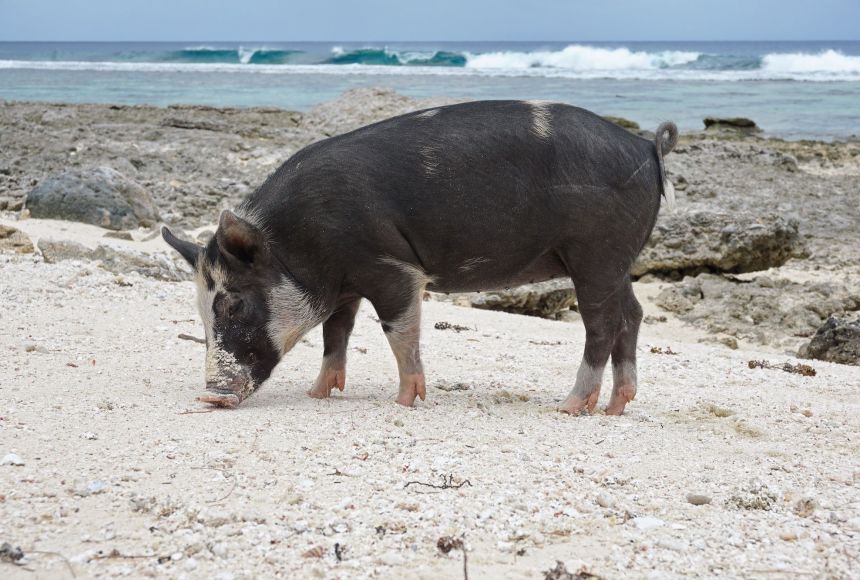Invasive species are one of the leading causes of global biodiversity loss. They can damage native habitats, spread diseases, cause extinctions, and leave massive cleanup bills in their wake. But what exactly are they?
An invasive species is commonly defined as any living organism not native to an area that causes economic or environmental harm, or is damaging to human health. It is worth noting that not all introduced species are invasive. In fact, they can sometimes be beneficial. For example, some of the world’s ubiquitous foods like potatoes and tomatoes come from plants that were introduced to the rest of the world from the Americas. An introduced species is only considered invasive if it causes harm.
Invasive species are usually generalists: species able to survive in a variety of environmental conditions and exploit broad ecological niches. When introduced to a new environment, they can quickly outcompete native species for resources, such as food and water. They often lack predators, competitors, or parasites in their new home, so populations can grow rapidly without natural enemies to keep them in check. In many cases, native species have not evolved natural defenses against the new invader, making them easy prey.
Human Influence
Invasive species are almost always spread by human activity. The increase of activities such as tourism and trade have meant people and goods can move all over the planet, and they often take invasive species with them, accidentally or intentionally.
Early explorers were responsible for the introduction of many invasive species, such as dogs (Canis familiaris), cats (Felis catus), pigs, and rats. Norway rats (Rattus norvegicus), also called brown rats, originated in China and spread throughout the Pacific Islands during the 18th century by stowing away on ships. They damage ecosystems by eating native species and spreading deadly diseases. The invasive feral pigs found on the United States islands of Hawai'i are thought to be descended from domesticated pigs (Sus domesticus) that early Polynesian settlers brought with them for food. Feral pigs dig up large areas of vegetation, spread invasive plant species, and contribute to soil erosion.
In some cases, government officials have encouraged the introduction of invasive species. For example, the Asian plant kudzu (Pueraria montana var. lobata) was introduced to the United States during the 1876 World’s Fair in Philadelphia, Pennsylvania. It gained popularity in the southern U.S. in the 1930s, when government officials encouraged people to plant the fast-growing vine in an effort to prevent soil erosion. But the kudzu quickly grew out of control, earning it the moniker “the vine that ate the South.”
Other times, invasive species were introduced as ill-advised attempts at biocontrol. For example, the cane toad (Bufo marinus), native to South and Central America, was introduced to Australia in the 1930s as a means of controlling pests in sugar cane plantations. Unfortunately, the plan backfired, and the cane toads became a pest themselves. The oversized toad is famously toxic and can be deadly to predators who try to eat it.
Today, we have a better understanding of the repercussions of moving plants and animals outside of their natural habitats and take measures to prevent spreading organisms beyond their ecosystems. Nonetheless, we continue to spread invasive species around the globe through trade and travel at an alarming rate.
For example, the brown tree snake (Boiga irregularis), native to Australia and Indonesia, has caused the extinction of endemic bird species in the South Pacific U.S. territory of Guam as well as widespread power outages by climbing electrical lines. It is thought to have arrived there in the 1950s by hitching a ride in military aircraft and cargo. In Hawai'i, officials are on high alert to stop the brown tree snake from spreading to the islands. If it were to gain a foothold in Hawai'i, this inconspicuous-looking serpent could cause over a billion dollars in damages each year.
Meanwhile, in the U.S. Florida Everglades, Burmese pythons (Python bivittatus) are causing trouble after being released into the wild by irresponsible pet owners. Burmese pythons make popular pets, but they grow to be incredibly large, prompting owners to release them into the wild. The Burmese python has no natural predators in Florida, so populations thrived, even interbreeding with local snakes to form a super-resilient hybrid. They prey on local birds, mammals, and even alligators.
Similarly, species of lionfish, native to the South Pacific and Indian Ocean, have quickly spread throughout the Atlantic, Gulf of Mexico, and Caribbean. Urban legend has it that the invasion started in 1992, when Hurricane Andrew smashed a beachside aquarium on the coast of Florida, spilling its contents into the sea. It is more likely, however, that there have been a number of separate introduction events that have caused the spread of lionfish outside of their native waters. As their name suggests, lionfish are fierce predators who prey on native fish species. They cause economic damage to fisheries and put coral reef ecosystems at risk.
What Can Be Done?
When it comes to invasive species, prevention is the best cure. Most countries have strict rules about what can and cannot be brought across their borders, but education is also important. National Geographic Explorer Erin Taylor Spencer founded the Invasive Species Initiative, a digital storytelling platform that highlights some of the grassroots campaigns working to tackle invasive species all over the world. Some innovative approaches include turning invasive plants into paper and serving invasive fish species as a delicacy (complete with the catchy slogan, “If you can’t beat ‘em, eat ‘em”).
Whether by accident or design, human activities have been the leading cause of invasive species introductions throughout history. But thanks to projects like the Invasive Species Initiative, we can also be part of the solution. So next time you are in Florida, why not try a lionfish fillet? And whatever you do, do not release your pet Burmese python into the wild.
